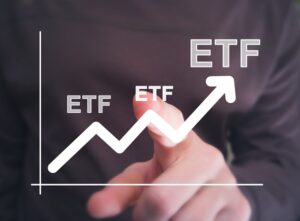
Comparing Costs: ETFs vs. Mutual Funds – Which Is More Cost-Effective?
Contents
- 1 ETF vs mutual fund fees
- 1.1 Comparing Costs: ETFs vs. Mutual Funds – Which Is More Cost-Effective?
- 1.2 Understanding ETFs and Mutual Funds
- 1.3 Comparing Costs: ETFs vs. Mutual Funds
- 1.4 Advantages and Disadvantages of ETFs and Mutual Funds
- 1.5 Choosing Between ETFs and Mutual Funds: Practical Examples
- 1.6 Conclusion
- 1.7 FAQs
- 1.8 ETF vs mutual fund fees
- 1.9 Concentration Risk: A Comprehensive Comparative Analysis
ETF vs mutual fund fees
Comparing Costs: ETFs vs. Mutual Funds – Which Is More Cost-Effective?
Investors have a multitude of options when it comes to building their portfolios, with Exchange-Traded Funds (ETFs) and Mutual Funds being two of the most popular. Both provide diversification and are managed by financial professionals, but their cost structures, trading mechanisms, and flexibility differ. For investors, understanding these differences is crucial for making informed decisions, especially when it comes to fees, which can have a significant impact on returns over time.


Understanding ETFs and Mutual Funds
Before diving into a cost comparison, let’s understand what ETFs and Mutual Funds are and how they operate.
Exchange-Traded Funds (ETFs)
An ETF is a collection of securities—stocks, bonds, commodities, or a mix—that trades on an exchange like a stock. Investors buy shares of an ETF, which represent ownership in the underlying assets. ETFs are typically passively managed and aim to track the performance of an index, such as the S&P 500. They are known for their low fees and tax efficiency.
Mutual Funds
A Mutual Fund pools money from multiple investors to invest in a diversified portfolio of stocks, bonds, or other assets. They are usually actively managed, meaning fund managers make decisions to buy or sell securities within the fund to achieve specific investment objectives. Mutual Funds do not trade on an exchange and are priced only once a day after the market closes.
Comparing Costs: ETFs vs. Mutual Funds
1. Expense Ratios
Expense ratios are a key factor in the cost structure of both ETFs and Mutual Funds. They represent the percentage of assets deducted annually to cover the operating costs of the fund.
- ETFs: Because they are generally passively managed, ETFs tend to have lower expense ratios than Mutual Funds. For instance, the average expense ratio for an ETF might range from 0.05% to 0.25%, depending on the type and provider.
- Mutual Funds: Actively managed Mutual Funds usually have higher expense ratios due to the intensive research and trading required. These can range from 0.5% to 2.5% or even higher. Some passively managed Mutual Funds, however, may have expense ratios closer to those of ETFs.
Example: The Vanguard S&P 500 ETF (VOO) has an expense ratio of around 0.03%, while actively managed funds like the American Funds Growth Fund of America Class A (AGTHX) may have an expense ratio around 0.62%.
2. Sales Loads
Mutual Funds may also include sales charges or “loads” which are fees paid by investors to brokers or financial advisors for buying or selling the fund.
- Front-End Load: A percentage fee is taken out of the initial investment. For instance, a front-end load of 5% on a $1,000 investment means $50 is deducted as a fee.
- Back-End Load: This fee is paid when shares are sold. Also known as a contingent deferred sales charge (CDSC), it generally decreases the longer an investor holds the shares.
- ETFs: ETFs do not have sales loads because they are bought and sold on an exchange like stocks.
Example: A Mutual Fund with a 5% front-end load on a $10,000 investment would cost $500 upfront. An ETF would have no such charge, though investors may pay a small commission.


3. Trading Costs
When it comes to trading costs, ETFs and Mutual Funds differ significantly.
- ETFs: Investors pay a commission to buy or sell ETFs, which can range from a few cents to several dollars, depending on the broker. However, many brokers now offer commission-free trading for ETFs, making it a cost-effective option.
- Mutual Funds: While investors do not pay a commission for buying or selling shares directly from the fund, they may incur fees if they trade through a broker. Additionally, some Mutual Funds charge redemption fees for selling shares before a certain period, typically a few months.
Example: An investor who frequently trades ETFs can take advantage of commission-free offers from brokers like Fidelity or Charles Schwab, while Mutual Fund investors may avoid these trading fees by holding onto their shares.
4. Tax Efficiency
Tax efficiency is an essential consideration for investors because it directly impacts after-tax returns. ETFs are often more tax-efficient than Mutual Funds due to their unique structure.
- ETFs: Most ETFs have a “creation and redemption” mechanism that allows shares to be bought and sold without triggering capital gains. This structure minimizes taxable events within the fund, making ETFs more tax-efficient, especially for taxable accounts.
- Mutual Funds: Actively managed Mutual Funds frequently trade securities within the portfolio, creating taxable events. These capital gains are passed on to shareholders, who must pay taxes on them, even if they didn’t sell any shares.
Example: Suppose an ETF and a Mutual Fund both track the S&P 500. The ETF may avoid generating capital gains distributions, while the Mutual Fund could have taxable distributions due to frequent portfolio adjustments.


5. Minimum Investment Requirements
Another factor to consider is the minimum initial investment required to buy into a fund.
- ETFs: ETFs have no minimum investment requirement beyond the cost of one share, making them accessible for small investors.
- Mutual Funds: Many Mutual Funds have minimum investment thresholds, which can range from $500 to $3,000 or more. This can be a barrier for new investors with limited capital.
Example: Vanguard’s Total Stock Market ETF (VTI) has no minimum beyond the share price, while the Vanguard 500 Index Fund Admiral Shares (VFIAX) has a minimum investment of $3,000.
6. Liquidity and Flexibility
Liquidity and flexibility in trading can also impact the cost-effectiveness of ETFs and Mutual Funds.
- ETFs: ETFs trade throughout the day, allowing investors to buy and sell shares at current market prices. This flexibility is advantageous for active traders but can lead to slight trading costs due to bid-ask spreads.
- Mutual Funds: Mutual Funds can only be traded once daily at the closing net asset value (NAV). This structure suits long-term investors but lacks the flexibility for intraday trading.
Example: An investor seeking to capitalize on real-time market fluctuations may prefer an ETF, while a long-term investor may choose a Mutual Fund for simplicity.
Advantages and Disadvantages of ETFs and Mutual Funds
To decide which investment vehicle suits you best, let’s weigh the advantages and disadvantages of each.
Advantages of ETFs
- Lower Expense Ratios: Typically lower costs than Mutual Funds, making them a cost-effective choice for many investors.
- Tax Efficiency: Fewer taxable events due to the creation/redemption mechanism.
- Intraday Trading Flexibility: Ability to trade ETFs like stocks during market hours.
- No Sales Loads: No front-end or back-end loads, reducing costs for investors.


Disadvantages of ETFs
- Bid-Ask Spread Costs: Frequent trading can incur small costs through bid-ask spreads.
- Commissions: Although many brokers offer commission-free ETFs, trading costs can apply with some brokers.
- Passive Management Limitations: Many ETFs track indices passively, potentially limiting returns in volatile markets.
Advantages of Mutual Funds
- Active Management: Potential to outperform indices due to professional management.
- Simplicity for Long-Term Investing: Suitable for buy-and-hold investors who don’t need intraday trading.
- No Trading Commissions: Typically no per-trade fees when purchased directly through the fund.
Disadvantages of Mutual Funds
- Higher Expense Ratios: Actively managed Mutual Funds tend to be more expensive due to management costs.
- Sales Loads: Front-end and back-end loads can increase the overall investment cost.
- Tax Inefficiency: Frequent trading within the fund can result in capital gains taxes for investors.
- Limited Trading Flexibility: Mutual Funds trade only once per day, which can limit strategic trading.
Choosing Between ETFs and Mutual Funds: Practical Examples
To illustrate the choice between ETFs and Mutual Funds, let’s look at a few examples.
Example 1: The Cost-Conscious Passive Investor
Scenario: John, a passive investor, wants to track the S&P 500 with minimal fees.
- Best Option: ETF (e.g., Vanguard S&P 500 ETF – VOO)
- Reason: John can take advantage of VOO’s low expense ratio (0.03%) and tax efficiency, while avoiding sales loads.
Example 2: The Long-Term Growth Seeker
Scenario: Maria, an investor with a high-risk tolerance, seeks growth by investing in actively managed funds.
- Best Option: Actively managed Mutual Fund (e.g., Fidelity Contrafund – FCNTX)
- Reason: Actively managed Mutual Funds, like FCNTX, provide an opportunity for higher returns due to professional management, although it comes with a higher expense ratio.
Example 3: The Tax-Sensitive Investor
Scenario: Robert wants to invest in a diversified fund but is concerned about taxes.
- Best Option: ETF (e.g., iShares MSCI USA Min Vol Factor ETF – USMV)
- Reason: The ETF’s structure is more tax-efficient, helping Robert minimize capital gains taxes.
Conclusion
Choosing between ETFs and Mutual Funds depends on individual goals, investment strategies, and cost sensitivity. ETFs often appeal to cost-conscious, tax-sensitive, and flexible investors who appreciate the ability to trade intraday. Mutual Funds, particularly actively managed ones, may be suitable for investors seeking professional management and willing to pay higher fees for potential outperformance.
Understanding the specific costs associated with each, such as expense ratios, loads, and tax efficiency, helps investors make informed choices that align with their financial goals. Regardless of the choice, being mindful of these costs can lead to better returns and a more effective investment strategy.


FAQs
1. Are ETFs or Mutual Funds better for long-term investors?
ETFs and Mutual Funds can both be suitable for long-term investors, depending on preferences. ETFs often have lower fees, which can benefit long-term growth, while Mutual Funds may offer active management to potentially outperform the market.
2. Can I avoid taxes by choosing an ETF?
ETFs are more tax-efficient due to their structure, which helps minimize capital gains distributions. However, investors are still subject to taxes on dividends and any capital gains from selling shares.
3. What is the typical minimum investment for Mutual Funds?
Many Mutual Funds have minimum investment requirements, typically ranging from $500 to $3,000. ETFs do not have a minimum investment beyond the cost of one share.
4. Can I trade Mutual Funds during market hours like ETFs?
No, Mutual Funds can only be traded once a day at the closing NAV. ETFs, however, can be traded throughout the day on an exchange, similar to stocks.
5. Which is cheaper overall: ETFs or Mutual Funds?
ETFs generally have lower expense ratios and no sales loads, making them a more cost-effective choice for many investors.
ETF vs mutual fund fees
Concentration Risk: A Comprehensive Comparative Analysis





















1 comment